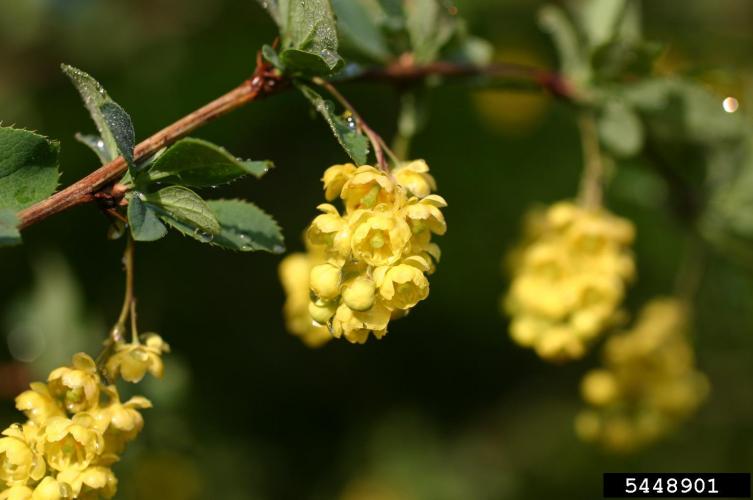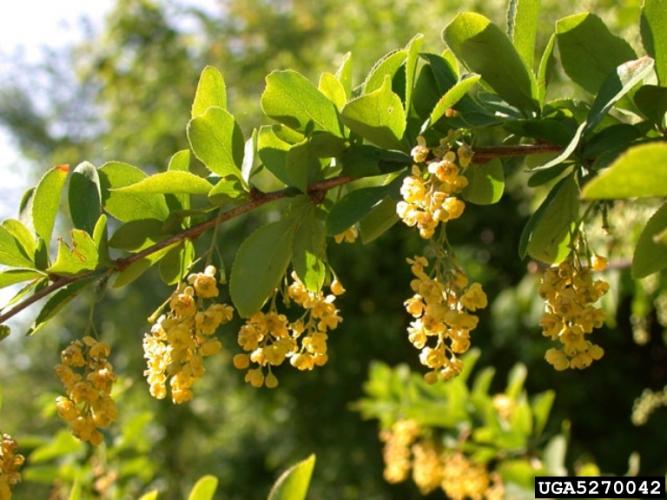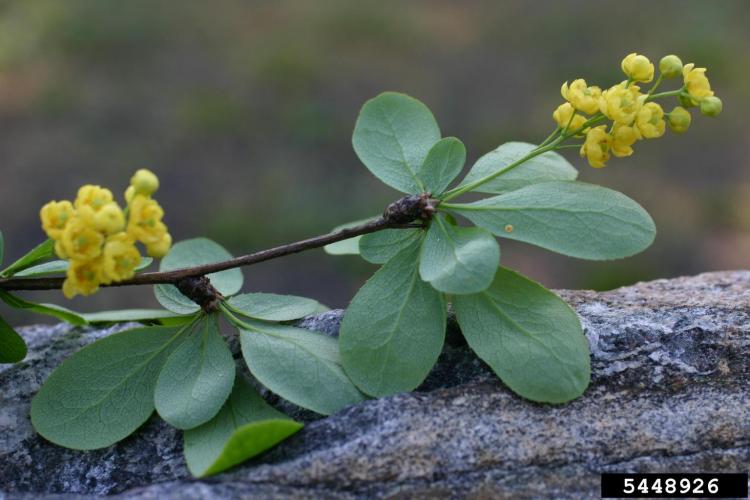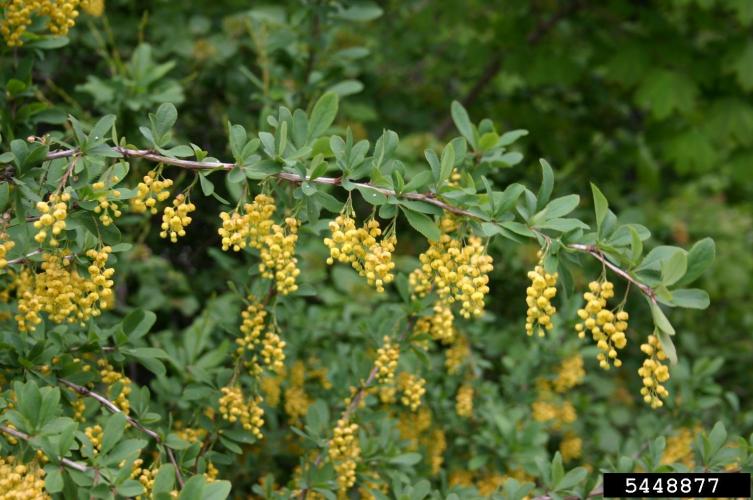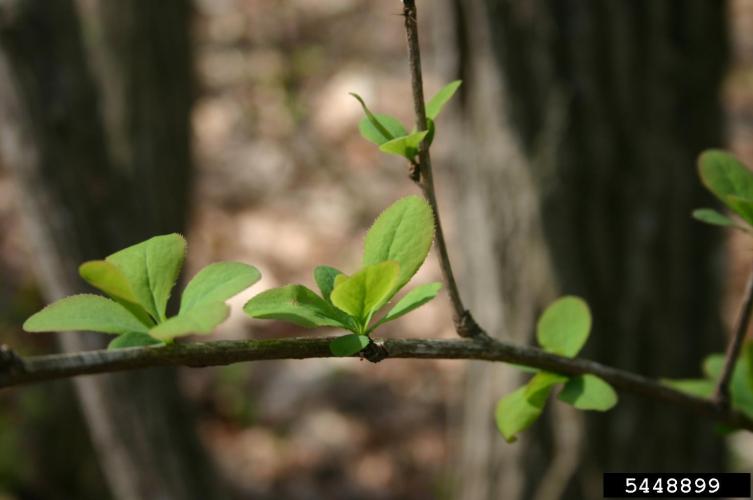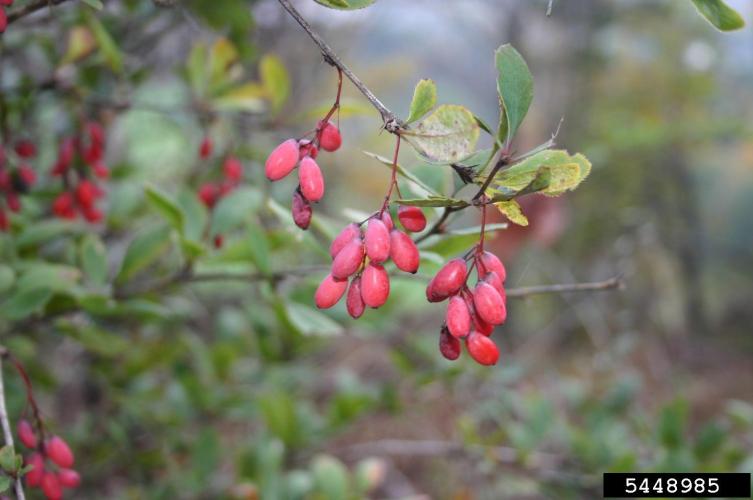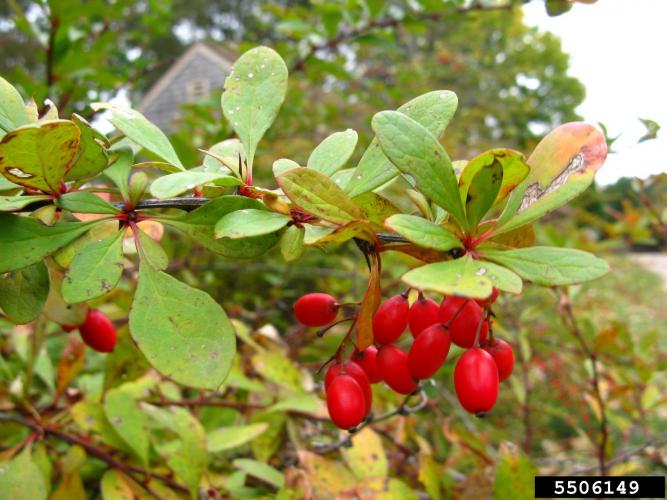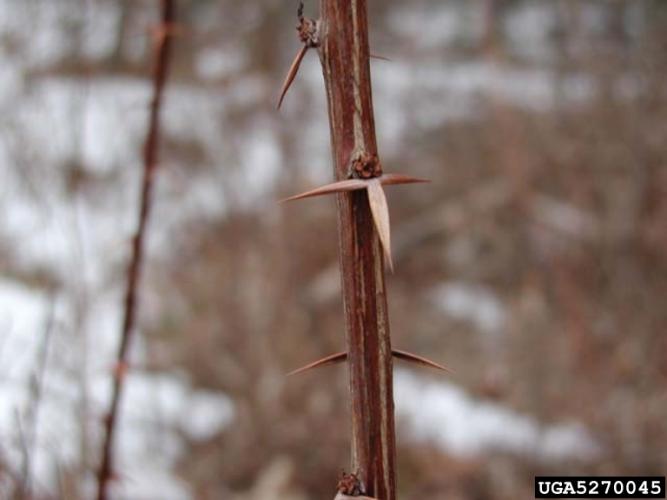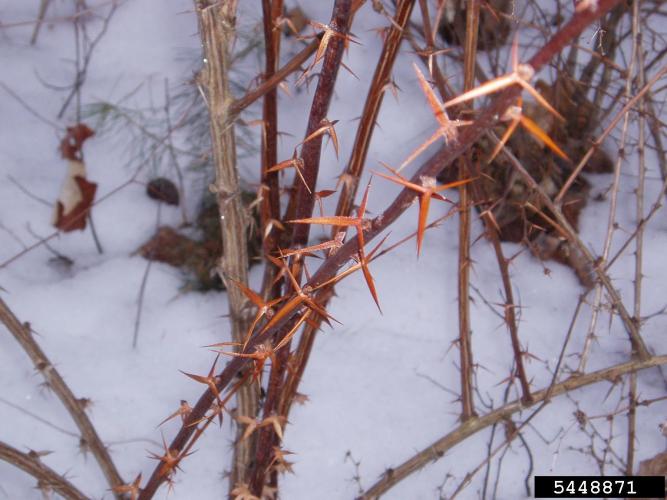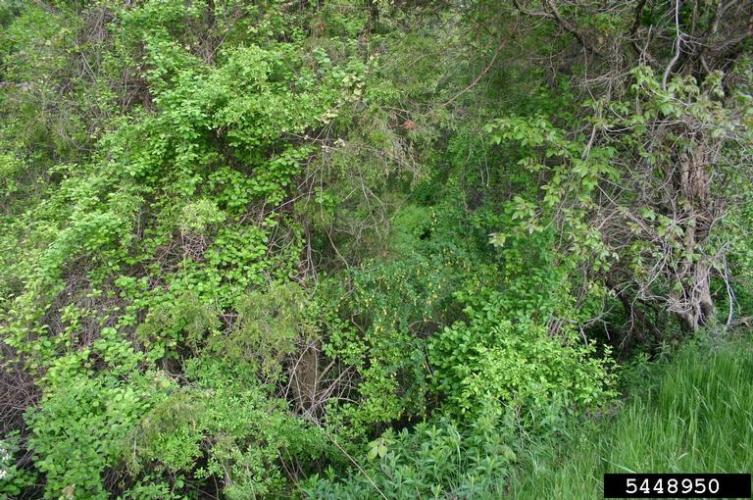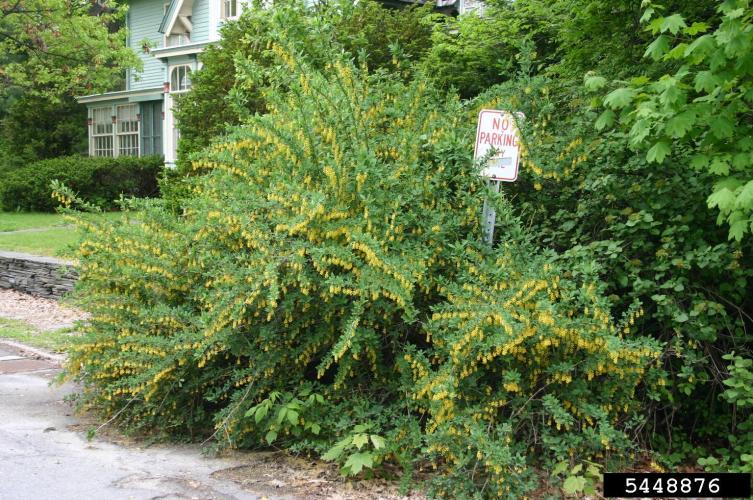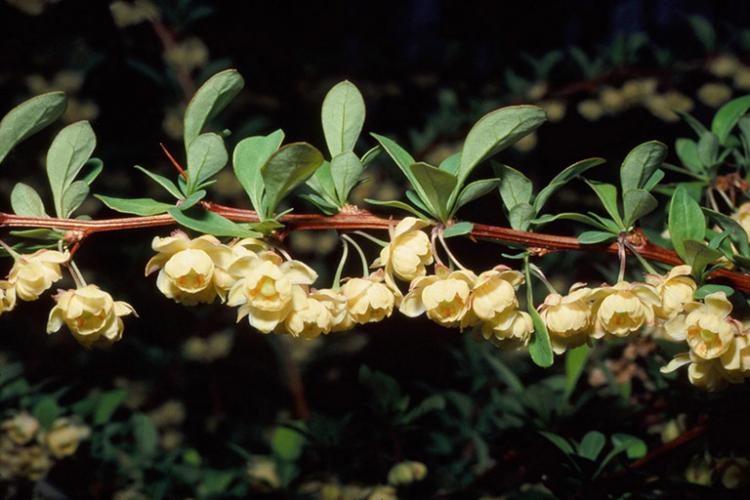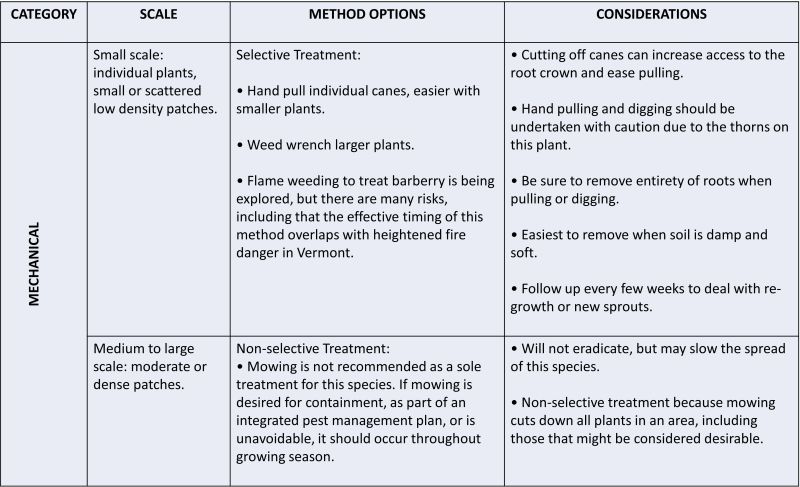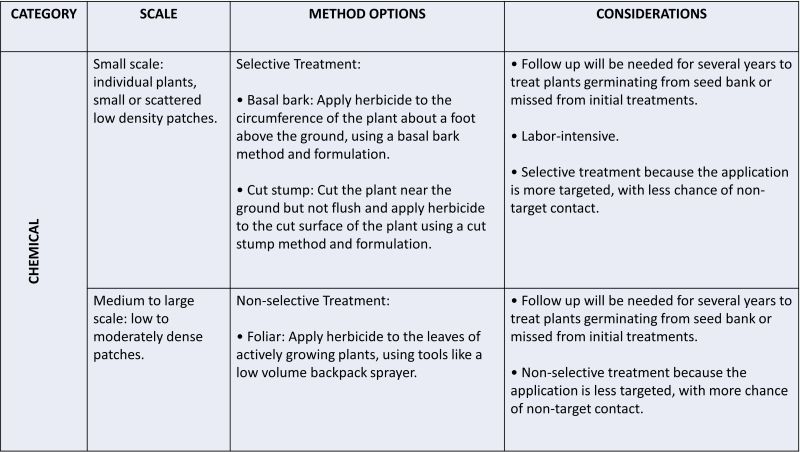Barberry, Common
Identification
Appearance
Berberis vulgaris is a deciduous shrub that can reach 13 feet in height. Arching branches which come into contact with the soil can produce new plants.
Foliage
The leaves are oval, 0.75-2 inches long, 0.25-0.75 inches wide, serrate and occur in clusters of 2-5. Each cluster of leaves is subtended by a short, three-branched spine.
Flowers
Flowering occurs in May to June, when small, yellow, less than 0.25 inches wide flowers develop in dangling racemes. The flowers have an unpleasant odor.
Fruit
Berries are red ellipsoids which are less than 0.3 inches in length and contain 1-3 small black seeds. The fruit is dispersed by birds and other wildlife.
Biology
Ecological Threat
Barberry forms dense stands in natural habitats including forests, open woodlands, wetlands and meadows. Once established, it displaces native plants and reduces wildlife habitat and forage, increasing pressure on natives by whitetailed deer. It has been found to alter the pH and biological activity of soil. Barberry is also a human health hazard, not only because it has sharp spines, but also because it acts as a nursery for deer ticks, which can transmit Lyme disease.
Origin
Originally favored as an ornamental in the 1800s. But fell out of favor, and was actually actively removed because of it's impact to cereal crops. Common barberry acts as an alternate host for cereal stem rust (Puccinia graminis), which can severely reduce cereal crop yields. In the early 1900’s crop failure was common due to cereal stem rusts outbreaks so in 1918 the United States created a barberry eradication program to remove them from the landscape.
Habitat
Forests, forest edges, meadows, fields
Life Cycle
In midspring to early summer, drooping clusters of pale yellow flowers develop, turning into bright red berries.
Vermont Distribution
How You Can Help
Native/non-invasive alternatives
Back chokeberry (Aronia melanocarpa)
Native Perennials and Shrubs for Vermont Gardens
Alternatives to Common Invasive Plants and Characteristics of Select Alternatives
Citations
Photo Credit
5270042,5270045, 1237091, 5448950, 5448899, 5448926, 5448876, 5448985, Leslie J. Mehrhoff, University of Connecticut, Bugwood.org
5506149, Nisa Karimi, Wisconsin Department of Natural Resources, Bugwood.org
Information Credit
New Hampshire Department of Agriculture, Markets and Food, Common barberry
Pennsylvania DCNR, Common barberry
US Forest Service Fire Effects Information System Report on Barberry
The Great Lakes Collaborative Woody Invasive Species - Barberry
USDA Natural Resources Conservation Service Brush Management for Barberry
